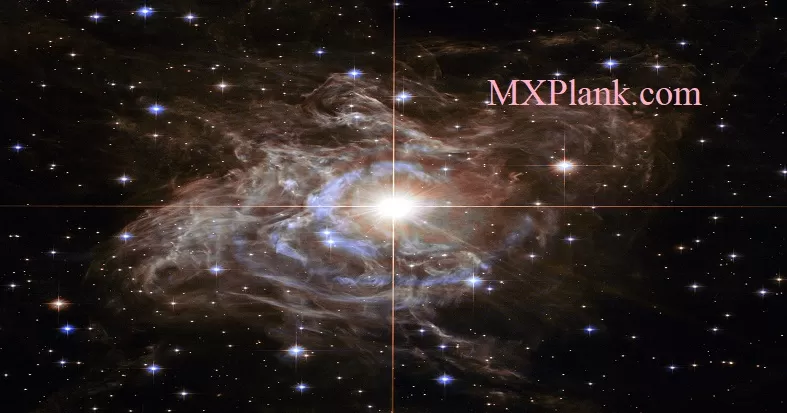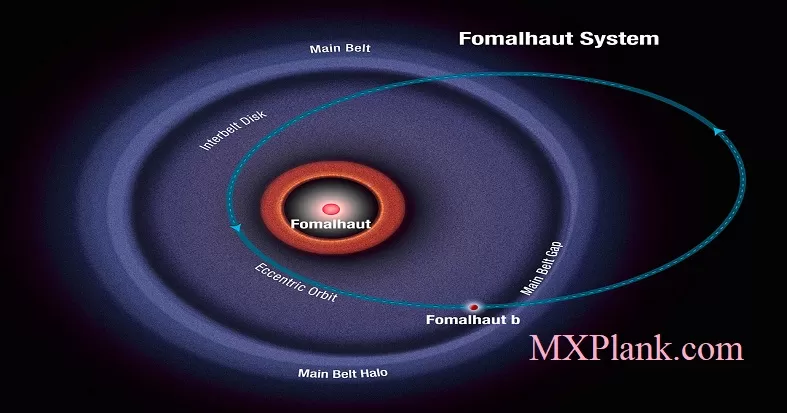Quantum Electro Dynamics
Outline
Because electromagnetism is a field theory, the result of QED was a quantum field theory - a quantum theory that contains a value at every point in space
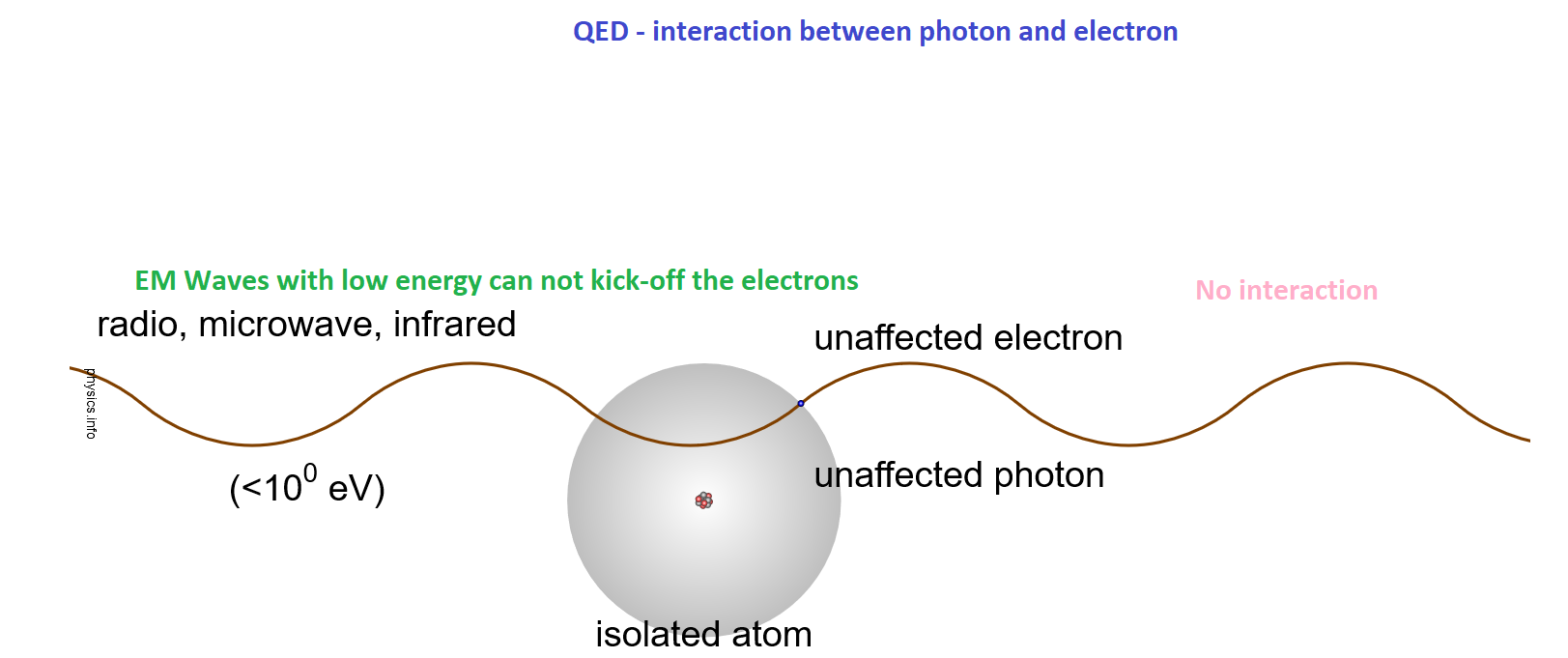
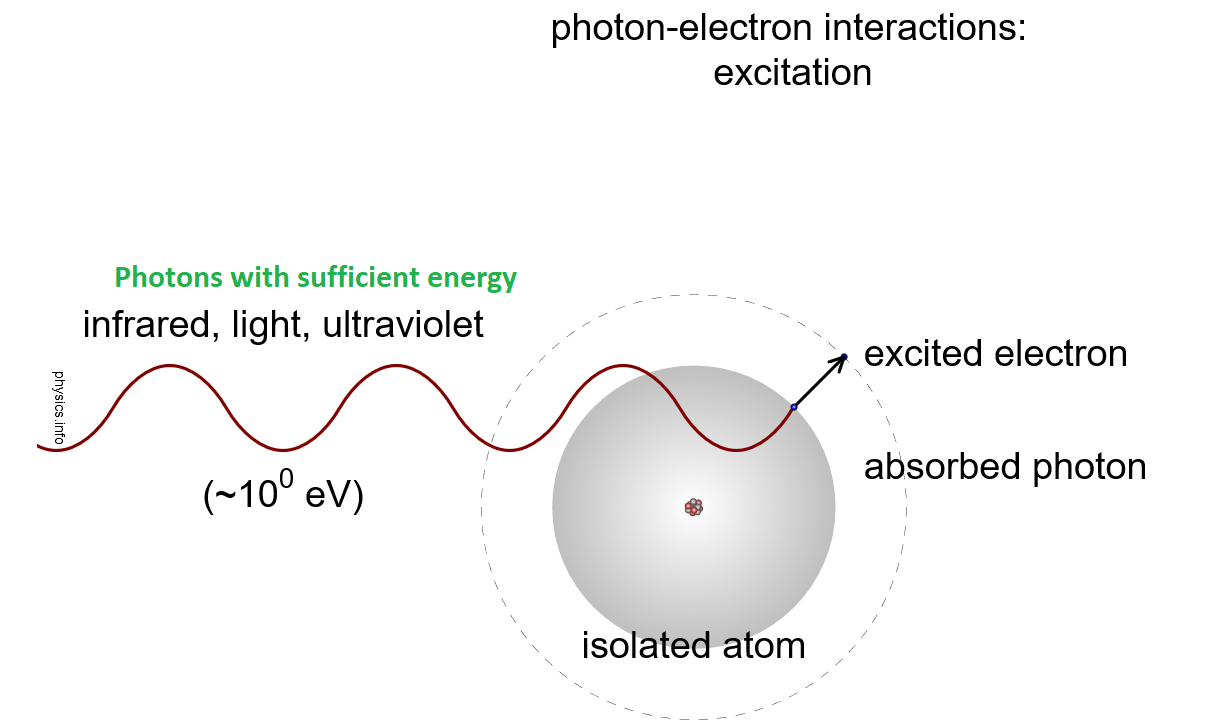
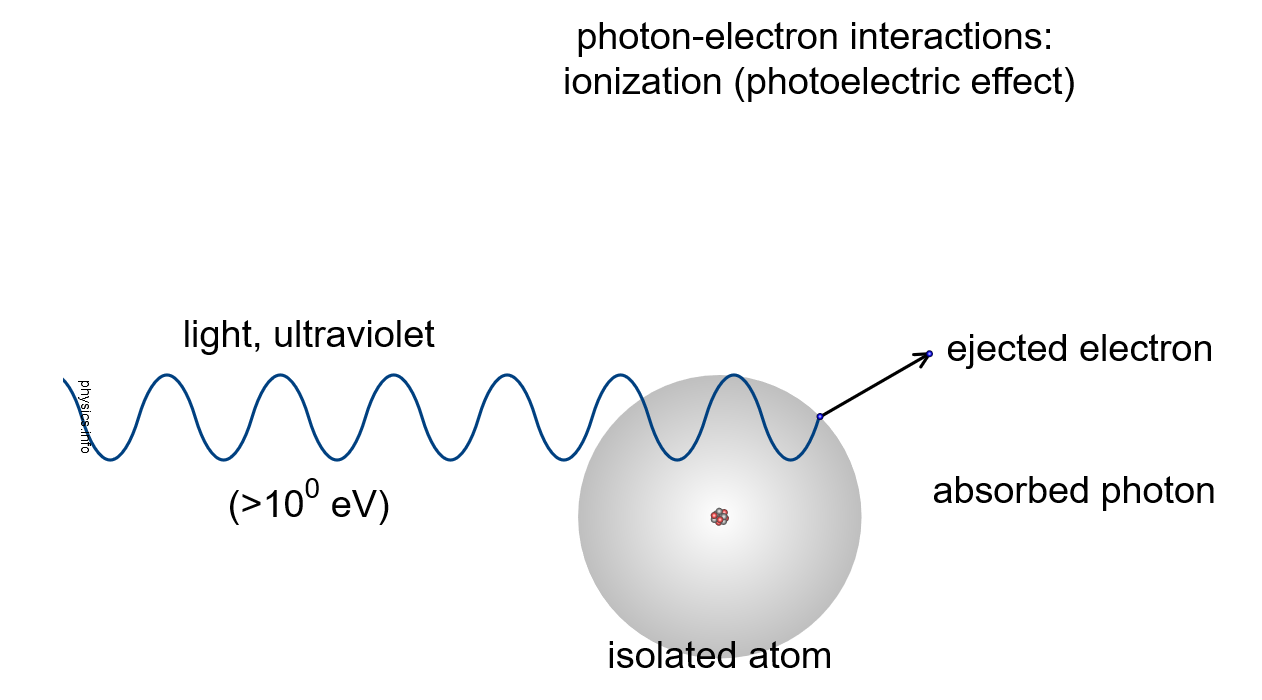
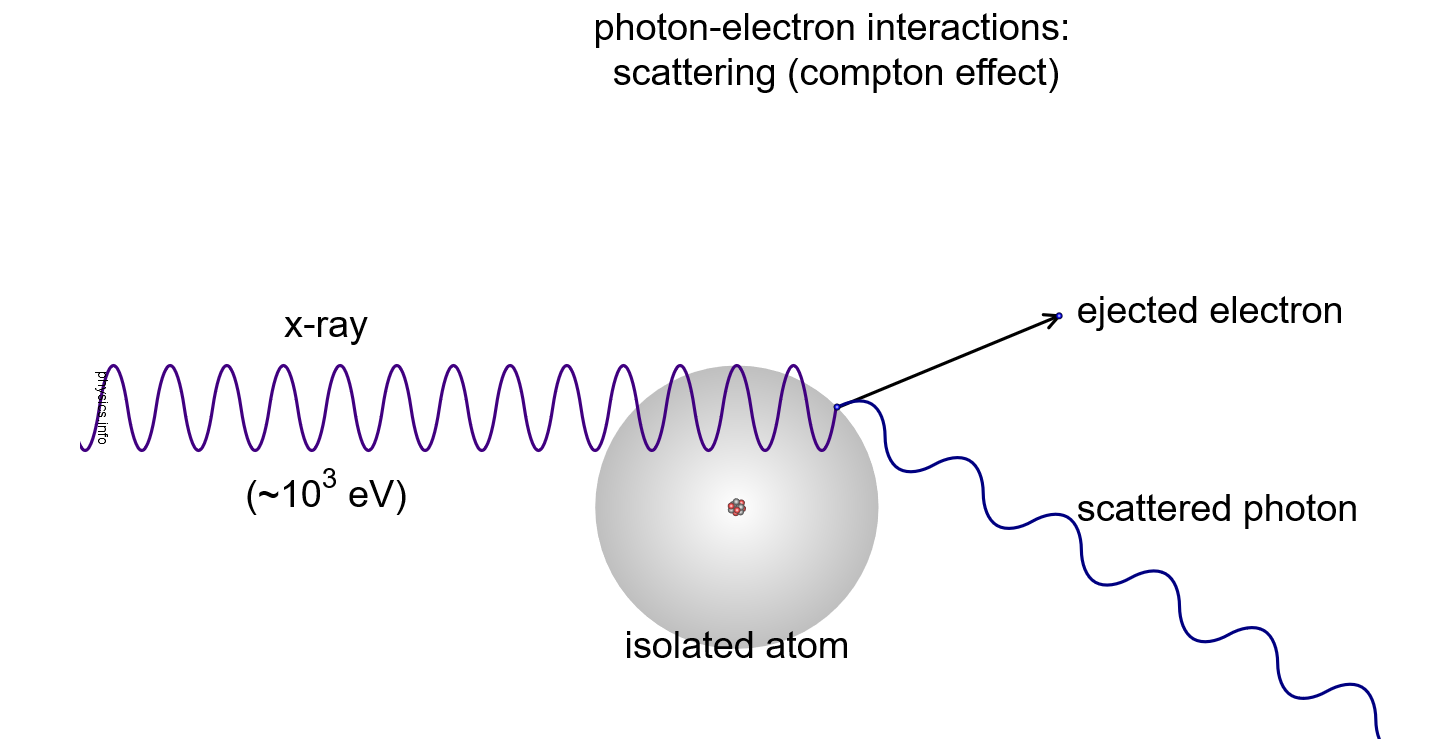
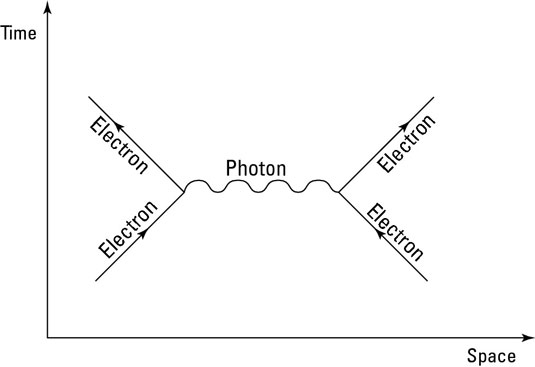
in QED two particles communicate their electromagnetic information by emitting and absorbing a photon.
A photon that acts in this manner is called a virtual photon or a messenger photon,
because it is created solely for the purpose of exchanging this information
Quantum electrodynamics (QED) is a complex and highly mathematical theory regarding the interaction of electromagnetic radiation with matter. The development of QED theory was essential in the verification and development of quantum field theory and it allows physicists to predict how subatomic particles are created or destroyed. QED is a fundamentally important scientific theory that accounts for all observed physical phenomena except those phenomena associated with aspects of general relativity theory and radioactive decay. QED is compatible with special relativity theory and special relativity equations are incorporated into QED equations. QED is also termed a gauge-invariant theory because its predictions are not affected by variations in space or time.
The practical value of QED theory is that it allows physicists to make calculations regarding the absorption and emission of light by atoms. In addition, QED provides very accurate predictions regarding the interactions between photons and charged atomic particles such as electrons.
As quarks, gluons, and other subatomic particles became known, QED became an increasingly important in explaining the structure, properties and reactions of these particles. QED, also known as the quantum theory of light, eventually became one of the most precise, accurate, and well tested theories in science. QED predictions of the mass of some subatomic particles, for example, offer results accurate to six significant figures or more.
QED describes the phenomena of light in ways that are counter-intuitive (not typical of everyday experience) because QED treats the quantum properties of light (properties that are conserved and that occur in discrete amounts called quanta). According to QED theory, light exists in a particle and wave-like dualities (i.e., the electromagnetic wave has both particle and wave-like properties). Electromagnetism results from the quantum properties of the photon, the fundamental particle responsible for the transmission or propagation of electromagnetic radiation. Unlike the particles of everyday experience, photons, can also exist as virtual particles that are constantly exchanged between charged particles and the forces of electricity and magnetism arise from the exchange of these virtual photons between charged particles.
The most accurate and complete definitions of virtual particles (e.g., virtual photons) are mathematical. Most non-mathematical descriptions, however, usually describe virtual photons as wave-like (i.e., existing in form like a wave on the surface of water after it is touched). According to QED theory, virtual photons are passed back and forth between the charged particles somewhat like basketball players passing a ball between them as run down the court. Only in their cloaked or hidden state do photons act as mediators of force between particles. The force caused by the exchange of virtual photons results from changes charged particles change their velocity (speed and/or direction of travel) as they absorb or emit virtual photons.
As virtual particles, photons are cloaked from observation and measurement. Accordingly, as virtual particles, virtual photons can only be detected by their effects. The naked transformation of a virtual particle to a real particle would violate the laws of physics specifying the conservation of energy and momentum. Photons themselves are electrically neutral and only under special circumstances and as a result of specific interactions do virtual photons become real photons observable as light.
QED theory accounts, for example, for the interactions of electrons, positrons (the positively charged antiparticle to the electron), and photons. In electron-positron fields, electron-positron pairs come into existence as photons interact with these fields. According to QED theory, the process also operates in reverse to allow photons to create a particle and its antiparticle (e.g., an electron and a positron).
QED mathematically describes a force similar to gravity in that it becomes weaker as the distance between charged particles increases. Like gravity, the force reduces in strength as the inverse square of the distance between charged particles. Moreover, the concept of forces such as electromagnetism arising from the exchange of virtual particles may carry profound implications regarding the advancement of theories relating to the strong, electroweak, and gravitational forces. Some physicists assert that if a unified theory can be found, it will rest on the foundations and methodologies established during the development of QED theory.
Quantum electrodynamics (QED) is a complex and highly mathematical theory regarding the interaction of electromagnetic radiation with matter. The development of QED theory was essential in the verification and development of quantum field theory and it allows physicists to predict how subatomic particles are created or destroyed. QED is a fundamentally important scientific theory that accounts for all observed physical phenomena except those phenomena associated with aspects of general relativity theory and radioactive decay. QED is compatible with special relativity theory and special relativity equations are incorporated into QED equations. QED is also termed a gauge-invariant theory because its predictions are not affected by variations in space or time.
The practical value of QED theory is that it allows physicists to make calculations regarding the absorption and emission of light by atoms. In addition, QED provides very accurate predictions regarding the interactions between photons and charged atomic particles such as electrons.
As quarks, gluons, and other subatomic particles became known, QED became an increasingly important in explaining the structure, properties and reactions of these particles. QED, also known as the quantum theory of light, eventually became one of the most precise, accurate, and well tested theories in science. QED predictions of the mass of some subatomic particles, for example, offer results accurate to six significant figures or more.
QED describes the phenomena of light in ways that are counter-intuitive (not typical of everyday experience) because QED treats the quantum properties of light (properties that are conserved and that occur in discrete amounts called quanta). According to QED theory, light exists in a particle and wave-like dualities (i.e., the electromagnetic wave has both particle and wave-like properties). Electromagnetism results from the quantum properties of the photon, the fundamental particle responsible for the transmission or propagation of electromagnetic radiation. Unlike the particles of everyday experience, photons, can also exist as virtual particles that are constantly exchanged between charged particles and the forces of electricity and magnetism arise from the exchange of these virtual photons between charged particles.
The most accurate and complete definitions of virtual particles (e.g., virtual photons) are mathematical. Most non-mathematical descriptions, however, usually describe virtual photons as wave-like (i.e., existing in form like a wave on the surface of water after it is touched). According to QED theory, virtual photons are passed back and forth between the charged particles somewhat like basketball players passing a ball between them as run down the court. Only in their cloaked or hidden state do photons act as mediators of force between particles. The force caused by the exchange of virtual photons results from changes charged particles change their velocity (speed and/or direction of travel) as they absorb or emit virtual photons.
As virtual particles, photons are cloaked from observation and measurement. Accordingly, as virtual particles, virtual photons can only be detected by their effects. The naked transformation of a virtual particle to a real particle would violate the laws of physics specifying the conservation of energy and momentum. Photons themselves are electrically neutral and only under special circumstances and as a result of specific interactions do virtual photons become real photons observable as light.
QED theory accounts, for example, for the interactions of electrons, positrons (the positively charged antiparticle to the electron), and photons. In electron-positron fields, electron-positron pairs come into existence as photons interact with these fields. According to QED theory, the process also operates in reverse to allow photons to create a particle and its antiparticle (e.g., an electron and a positron).
QED mathematically describes a force similar to gravity in that it becomes weaker as the distance between charged particles increases. Like gravity, the force reduces in strength as the inverse square of the distance between charged particles. Moreover, the concept of forces such as electromagnetism arising from the exchange of virtual particles may carry profound implications regarding the advancement of theories relating to the strong, electroweak, and gravitational forces. Some physicists assert that if a unified theory can be found, it will rest on the foundations and methodologies established during the development of QED theory.



